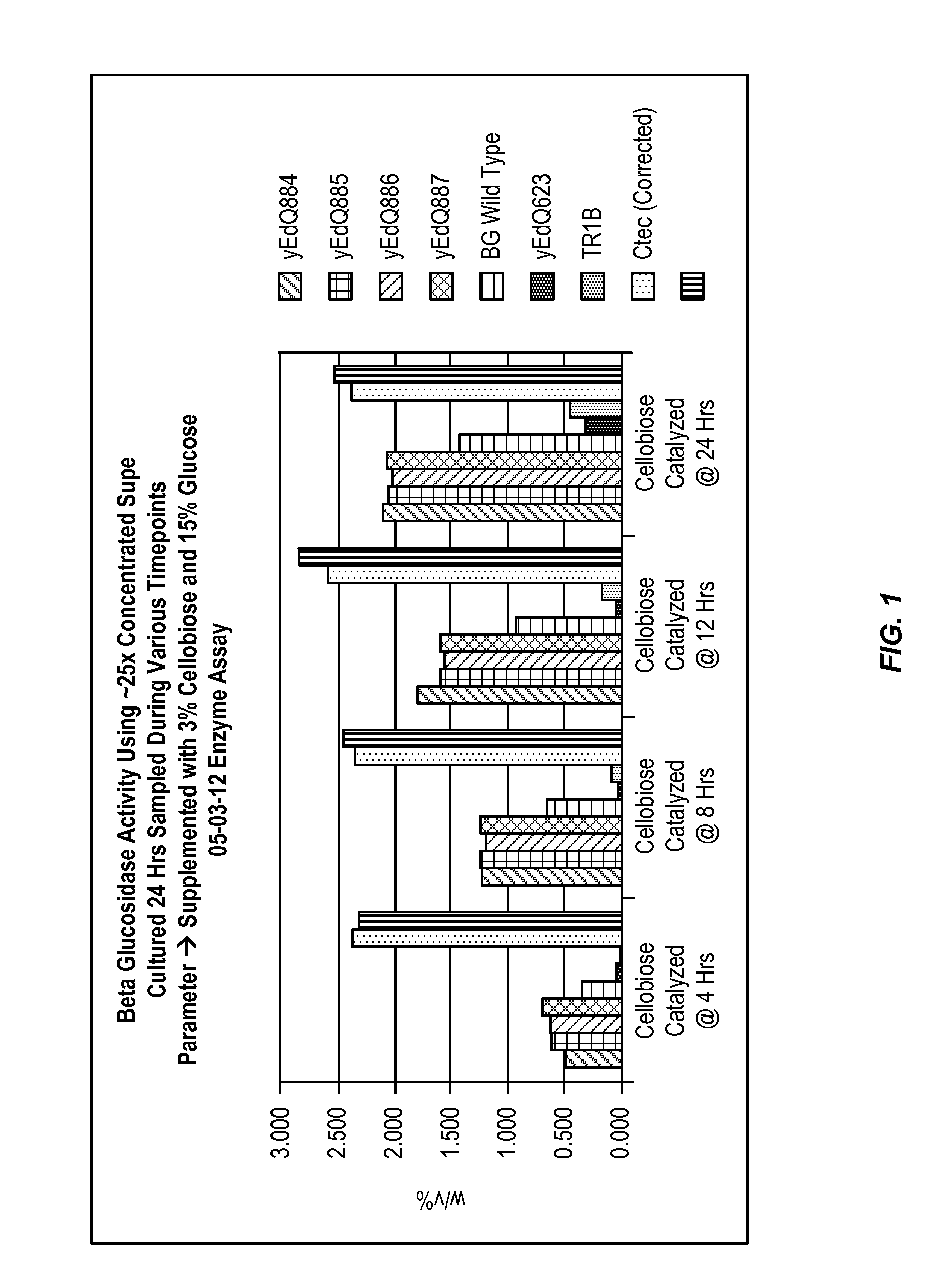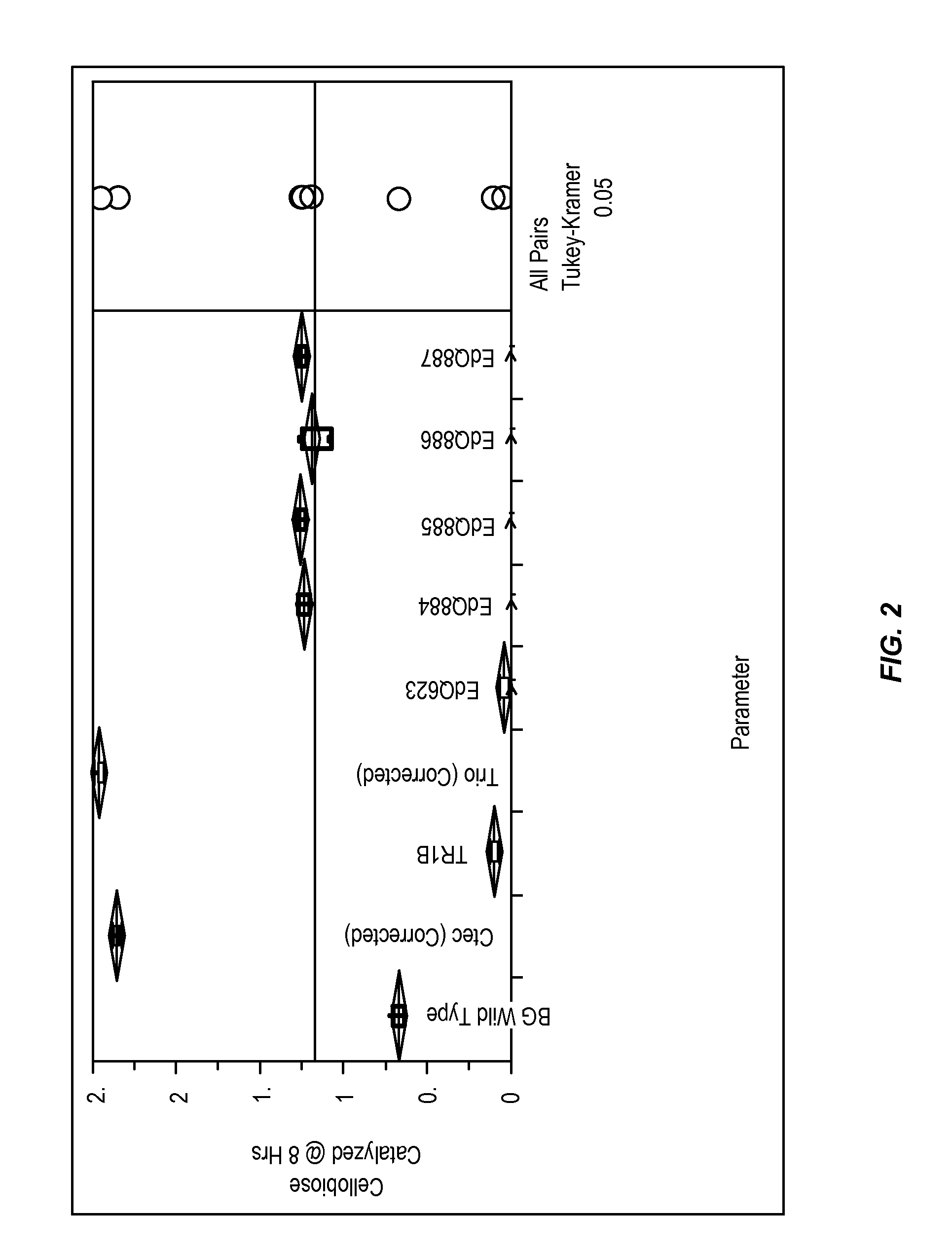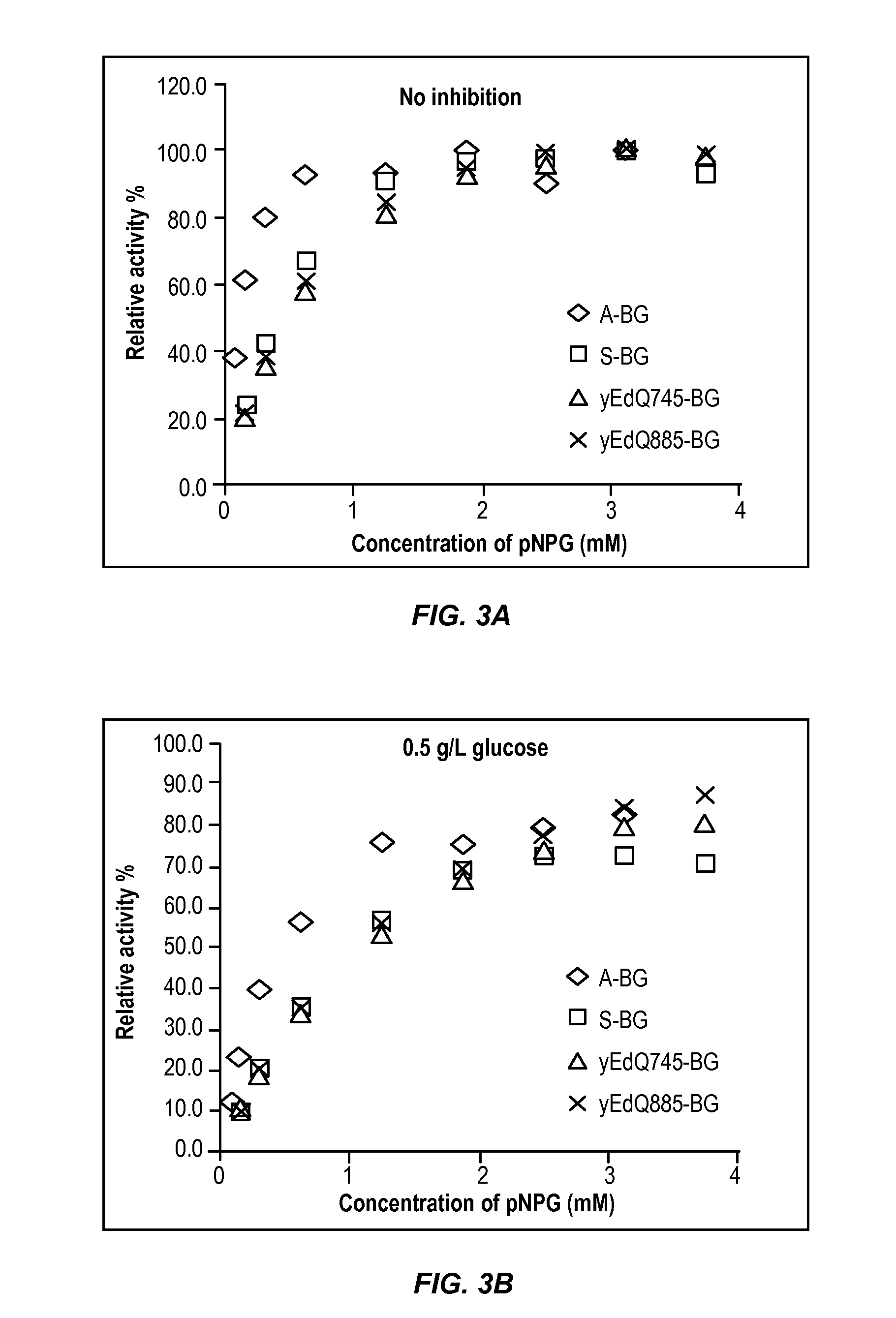Improved beta-glucosidase enzymes for increased biomass saccharification
a beta-glucosidase and biomass technology, applied in biochemical equipment and processes, biofuels, enzymes, etc., can solve the problems of low hydrolysis efficiency, reduced overall saccharification efficiency of glucose, and high cost of enzymes, so as to improve kinetic properties, improve kinetic properties, and increase catalytic efficiency
- Summary
- Abstract
- Description
- Claims
- Application Information
AI Technical Summary
Benefits of technology
Problems solved by technology
Method used
Image
Examples
example 1
[0146]This example describes the production of a recombinant yeast strain that expresses beta-glucosidase activity.
[0147]The beta-glucosidase (BG) gene from Aspergillus niger (Accession #CAB75696.1) was integrated into the TR3 yeast background at the T4U3 genomic site. This BG gene contained a Saccharomyces codon-optimized BG open reading frame, a SUC2 secretion signal and demonstrated BG activity as described below.
[0148]To construct an expression vector suitable for expressing wild-type beta-glucosidase in yeast, the beta-glucosidase open reading frame was PCR amplified from commercially synthesized DNA using the Phusion high fidelity polymerase (Finnzymes / NEB). The amplified DNA fragment was cloned into a vector harboring a YPRC Tau3 targeted integration cassette under control of the GPD (TDH3) promoter and the SUC2 full secretion signal. Full length integration cassettes were amplified from plasmids recovered from transformed yeast strains demonstrating beta-glucosidase activity...
example 2
[0152]This example describes the production of beta-glucosidase polypeptides having amino acid substitutions that improve enzyme activity.
[0153]Mutagenesis Strategy for BG:
[0154]Random mutagenesis of the BG gene was performed using Genemorph® II random mutagenesis kit (Stratagene). Primers were designed to target three regions within the beta glucosidase gene:
1. Within the open reading frame (ORF) of the gene.
2. Within the nucleophile site, 37 amino acids up and downstream from the aspartic acid residue.
3. Downstream from the nucleophile site, not including regions contained in above site.
[0155]The sequences of the primers used are provided below.
Primers Directed to BG's ORF:
[0156]
a. BG Orf FWD = (SEQ ID NO: 27)5′ ATGAGATTTACTTTGATTGAAGCTG 3′.b. Bg Orf REV = (SEQ ID NO: 28)5′ CTAATGAACAGTTGGCAAAGAAG 3′.
Primers Directed to the Nucleophile Region:
[0157]
c. BG Cat FWD = (SEQ ID NO: 29)5′ GGCCATTTGCTGATGCTATT 3′.d. BG Cat REV = (SEQ ID NO: 30)5′ CAACTCTCCATTGTGGAACAG 3′.
Primers Directed ...
example 3
[0168]This example shows that the beta-glucosidase mutants described herein have increased activity in the presence of high glucose concentrations.
[0169]Initial Screening of Glucose Tolerance of Engineered BG Mutants
[0170]To further evaluate cellobiose conversion and resistance of BG activity to high glucose levels, the modified beta-glucosidase enzymes produced by the yeast strains described above were tested for glucose inhibition of beta-glucosidase activity. This experiment showed that a subset of BG mutants outperformed wild type BG in 3% cellobiose and 15% glucose conditions, and were only 40% less effective than Cellic® Ctec2 (Novozymes) or Accellerase® Trio™ (Genencor) in regards to cellobiose degradation at T=24. The high level of glucose used in this initial screening assay was to evaluate BG performance in conditions similar to corn mash fermentations where glucose levels at 8 hrs of fermentation can be >10% w / v. Subsequent high resolution glucose inhibition assays (descr...
PUM
| Property | Measurement | Unit |
|---|---|---|
| particle size | aaaaa | aaaaa |
| particle size | aaaaa | aaaaa |
| particle size | aaaaa | aaaaa |
Abstract
Description
Claims
Application Information
 Login to View More
Login to View More - R&D
- Intellectual Property
- Life Sciences
- Materials
- Tech Scout
- Unparalleled Data Quality
- Higher Quality Content
- 60% Fewer Hallucinations
Browse by: Latest US Patents, China's latest patents, Technical Efficacy Thesaurus, Application Domain, Technology Topic, Popular Technical Reports.
© 2025 PatSnap. All rights reserved.Legal|Privacy policy|Modern Slavery Act Transparency Statement|Sitemap|About US| Contact US: help@patsnap.com



